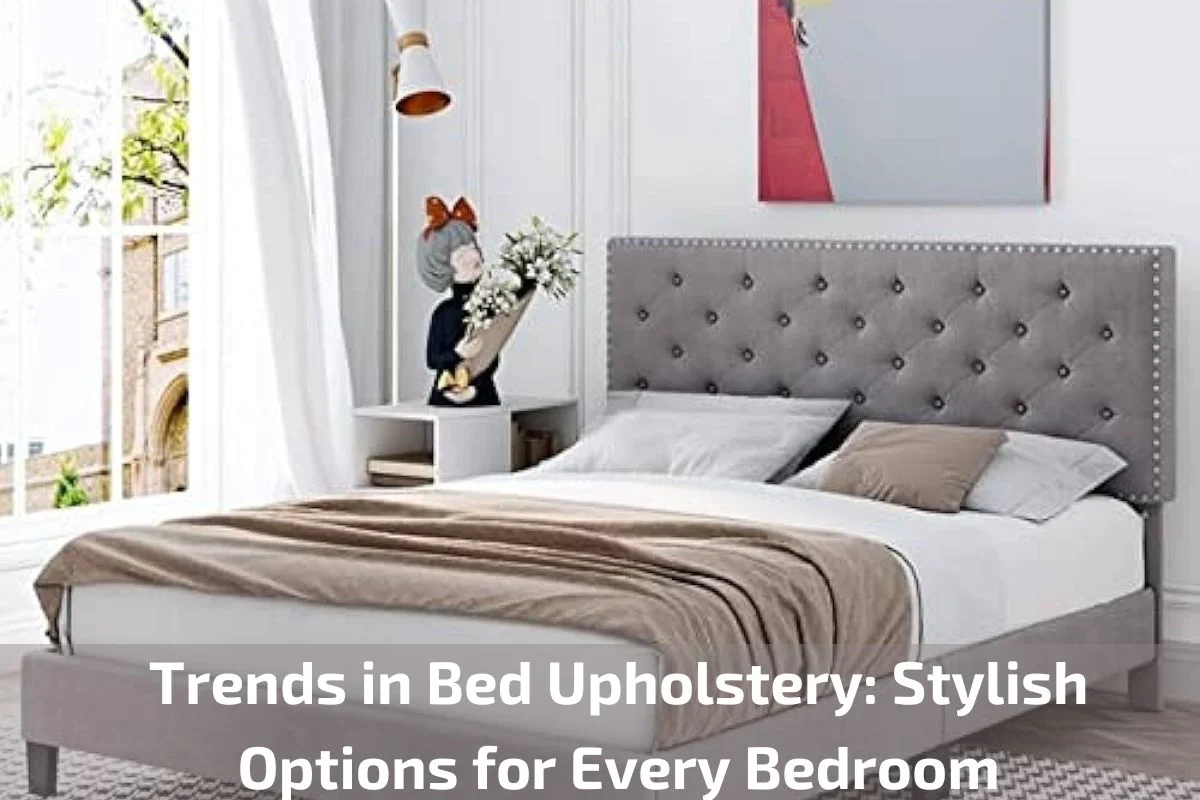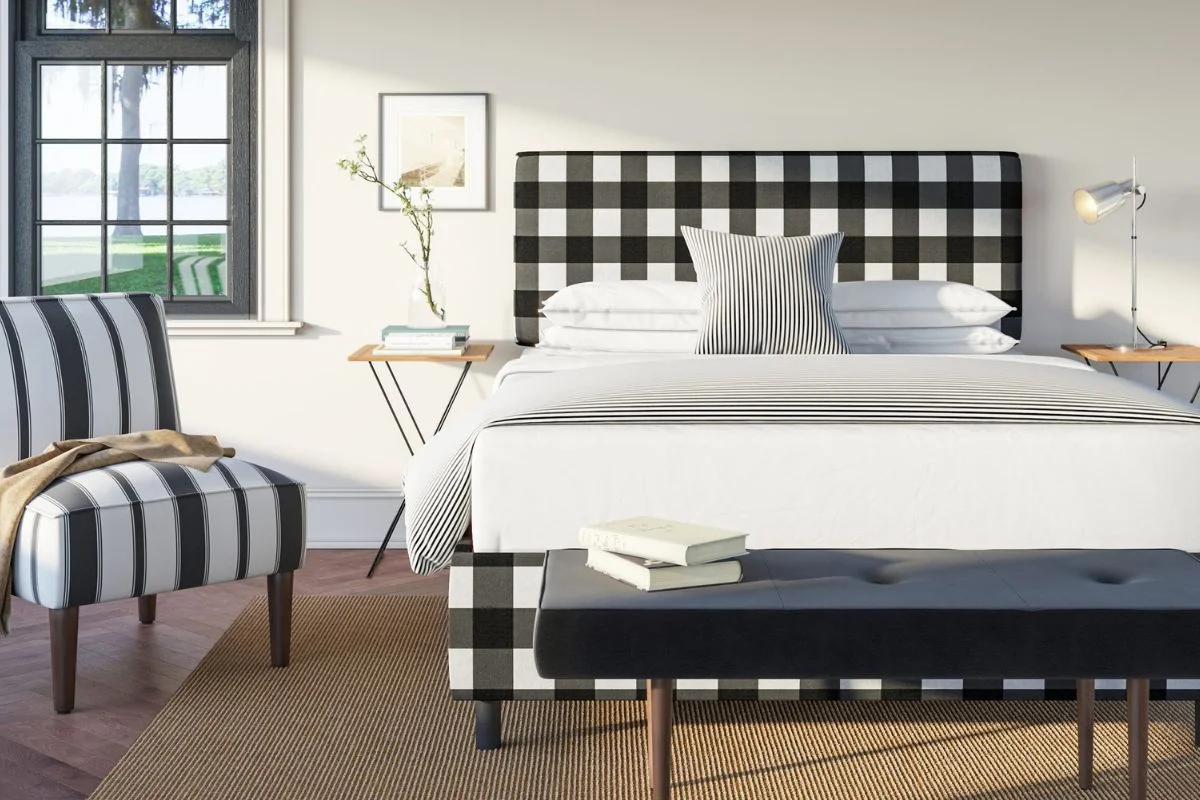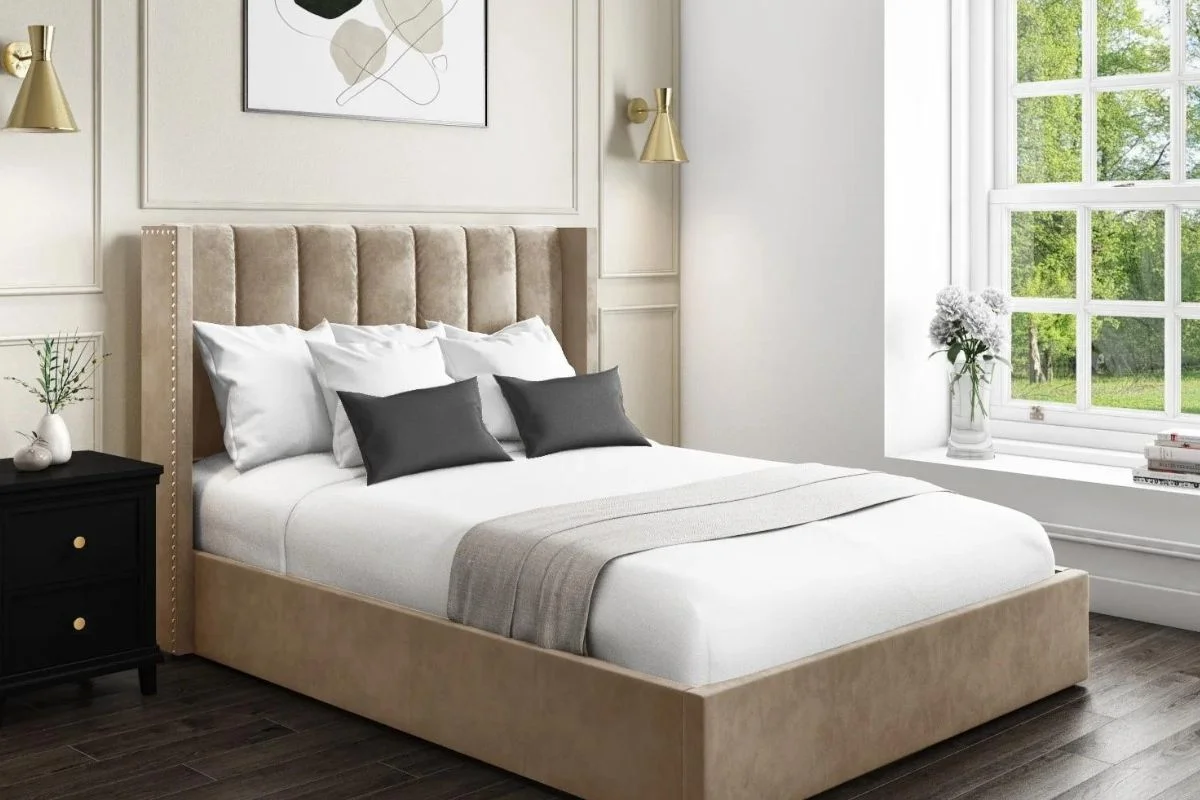Trends in Bed Upholstery: Stylish Options for Every Bedroom
The bed is the focal point of any bedroom, and its upholstery plays a significant role in setting the tone for the entire space. From luxurious fabrics to innovative designs, the world of bed upholstery is constantly evolving with new trends emerging each year.
In this guide, we’ll take a closer look at the latest trends in bed upholstery, offering stylish options that are sure to enhance the look and feel of every bedroom. Whether you’re drawn to sleek minimalism, cozy textures, or bold patterns, there’s a trend to suit every taste and bedroom style.
Join us as we explore the hottest trends in bed upholstery, from statement headboards to upholstered bed frames, and discover how you can incorporate these stylish options into your own bedroom decor. With the right bed upholstery, you can create a comfortable and inviting retreat that reflects your personal style and makes a lasting impression. Let’s dive into the world of bed upholstery trends and transform your bedroom into a stylish sanctuary.
Brief overview of the importance of bed upholstery in bedroom design
Bed upholstery plays a crucial role in bedroom design, serving both functional and aesthetic purposes. Upholstered beds provide a comfortable and inviting place to rest, enhancing the overall comfort of the bedroom. Additionally, the upholstery fabric or material can significantly impact the style and ambiance of the room. Whether you prefer a sleek and modern look, a cozy and traditional feel, or a luxurious and opulent vibe, the choice of bed upholstery can help you achieve your desired aesthetic. Furthermore, bed upholstery can serve as a focal point in the bedroom, drawing attention and adding visual interest to the space. Overall, bed upholstery is essential in creating a stylish, comfortable, and cohesive bedroom design scheme.
Pros and Cons of Different Bed Upholstery Fabrics
When choosing the upholstery fabric for your bed, it’s essential to consider the pros and cons of various materials to ensure you make the right decision for your needs and preferences. Here’s a breakdown of the advantages and disadvantages of different bed upholstery fabrics:
Cotton:
Pros:
- Soft and breathable, providing comfort for all seasons.
- Durable and easy to clean, making it ideal for everyday use.
- Available in a wide range of colors and patterns to suit different styles.
Cons:
- Prone to wrinkling, requiring regular maintenance to keep it looking neat.
- May fade over time, especially if exposed to direct sunlight.
- Less resistant to stains compared to some synthetic fabrics.
Polyester:
Pros:
- Highly durable and resistant to stretching, shrinking, and wrinkling.
- Fade-resistant, retaining its color and vibrancy over time.
- Budget-friendly option available in a variety of textures and designs.
Cons:
- May not be as breathable as natural fabrics like cotton, potentially trapping heat.
- Prone to static cling, attracting lint and dust.
- Can feel less luxurious compared to higher-end upholstery materials.
Linen:
Pros:
- Naturally breathable and moisture-wicking, providing cool comfort in warm weather.
- Softens over time, becoming even more comfortable with use.
- Offers a relaxed, casual look that complements a range of interior styles.
Cons:
- Wrinkles easily and requires regular ironing to maintain a neat appearance.
- More prone to staining and may require professional cleaning for stubborn marks.
- Can be more expensive than synthetic fabrics like polyester.
Velvet:
Pros:
- Luxurious and sumptuous texture adds a touch of elegance to any bedroom.
- Provides excellent insulation, keeping you warm in colder weather.
- Available in a variety of rich colors and finishes for a glamorous look.
Cons:
- Requires careful maintenance to prevent crushing and maintain its plush appearance.
- May attract pet hair and lint more than other fabrics.
- Higher-end option that can be more expensive than other upholstery materials.
Types of Bed Upholstery Materials
When it comes to bed upholstery, there are various materials to choose from, each offering unique characteristics and benefits. Here’s an overview of the most common types of bed upholstery materials:
Fabric:
- Fabric upholstery is one of the most popular choices for bed upholstery.
- It encompasses a wide range of materials, including cotton, linen, polyester, and velvet.
- Fabric upholstery offers versatility in terms of texture, color, and pattern, allowing for customization to suit different preferences and interior styles.
- Different fabric types offer varying levels of durability, breathability, and maintenance requirements.
Leather:
- Leather upholstery adds a touch of sophistication and luxury to any bedroom.
- Genuine leather is durable and develops a rich patina over time, enhancing its appearance.
- Faux leather options provide a more affordable alternative while still offering a similar aesthetic.
- Leather upholstery is easy to clean and maintain, making it a practical choice for busy households.
Vinyl:
- Vinyl upholstery is a synthetic material that mimics the look and feel of leather at a lower cost.
- It is water-resistant and easy to clean, making it suitable for environments where spills or stains are likely.
- Vinyl upholstery is available in a variety of colors and finishes, offering versatility in design options.
- While not as durable as genuine leather, vinyl upholstery is still a practical choice for those seeking a leather-like appearance on a budget.
Microfiber:
- Microfiber upholstery is made from tightly woven synthetic fibers, resulting in a soft and plush texture.
- It is highly durable and resistant to stains, making it an excellent choice for households with children or pets.
- Microfiber upholstery is available in a wide range of colors and styles, offering versatility in design options.
- It is easy to clean and maintain, requiring only regular vacuuming and occasional spot cleaning.
Suede:
- Suede upholstery is made from the underside of animal hides, resulting in a soft and velvety texture.
- It offers a luxurious look and feel, adding warmth and elegance to any bedroom.
- Suede upholstery is more prone to staining and requires careful maintenance to preserve its appearance.
- While not as durable as leather or microfiber, suede upholstery can be treated with protective coatings to improve its longevity.
Choosing the Right Bed Upholstery
Selecting the perfect upholstery for your bed is a crucial decision that can significantly impact the overall look, feel, and functionality of your bedroom. Here are some essential factors to consider when choosing the right bed upholstery:
Comfort:
- Opt for upholstery materials that offer the level of comfort you desire for a good night’s sleep.
- Consider factors such as softness, breathability, and temperature regulation to ensure maximum comfort.
Durability:
- Choose upholstery fabrics that are durable and long-lasting to withstand daily wear and tear.
- Consider the quality of the material and its ability to withstand frequent use without fading, pilling, or tearing.
Style:
- Select upholstery that complements your bedroom decor and reflects your personal style preferences.
- Consider factors such as color, texture, and pattern to ensure the upholstery enhances the overall aesthetic of the room.
Maintenance:
- Evaluate the maintenance requirements of different upholstery materials and choose one that fits your lifestyle.
- Consider factors such as stain resistance, ease of cleaning, and compatibility with household cleaners.
Allergies:
- If you have allergies or sensitivities, choose upholstery materials that are hypoallergenic and resistant to dust mites and allergens.
- Opt for materials that are easy to clean and maintain to minimize the accumulation of allergens.
Budget:
- Set a budget for your bed upholstery project and choose materials that fit within your price range.
- Consider the cost of the upholstery fabric, as well as any additional expenses such as professional installation or cleaning.
Sustainability:
- Consider the environmental impact of different upholstery materials and opt for sustainable options whenever possible.
- Choose materials that are made from eco-friendly and renewable sources, and that are produced using environmentally friendly manufacturing processes.
Maintaining Bed Upholstery
Proper maintenance of your bed upholstery is essential to ensure its longevity, cleanliness, and overall appearance. Here are some tips for effectively maintaining your bed upholstery:
Regular Cleaning:
- Vacuum your bed upholstery regularly to remove dust, dirt, and debris.
- Use a soft brush attachment to gently remove any surface dirt or pet hair.
- Spot clean any spills or stains immediately using a mild detergent and water, following the manufacturer’s instructions.
Rotation:
- Rotate your mattress and flip it regularly to ensure even wear and prevent sagging.
- If your bed has removable cushions or pillows, rotate them periodically to distribute the weight evenly and prevent indentation.
Protection:
- Use mattress protectors and pillow covers to shield your bed upholstery from spills, stains, and allergens.
- Consider using bed skirts or valances to protect the underside of your bed and prevent dust accumulation.
Sun Protection:
- Avoid placing your bed in direct sunlight, as prolonged exposure can cause fading and deterioration of upholstery fabrics.
- Use curtains or blinds to block out sunlight during peak hours, especially if your bed is located near a window.
Professional Cleaning:
- Schedule professional upholstery cleaning at least once a year to deep clean and refresh your bed upholstery.
- Choose a reputable cleaning service that specializes in upholstery cleaning and uses safe and eco-friendly cleaning products.
Preventive Maintenance:
- Check for loose threads, seams, or buttons regularly and repair them promptly to prevent further damage.
- Avoid sitting or standing on the edges of your bed, as this can cause premature wear and tear.
Air Circulation:
- Allow your bed upholstery to breathe by removing decorative pillows, throws, and cushions periodically.
- Open windows or use fans to promote air circulation and prevent moisture buildup, which can lead to mold and mildew growth.
Conclusion
In conclusion, bed upholstery plays a vital role in creating a comfortable and stylish bedroom space. From selecting the right fabric and design to maintaining its cleanliness and longevity, bed upholstery requires careful consideration and proper care.


